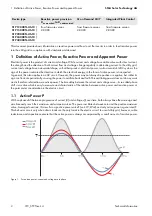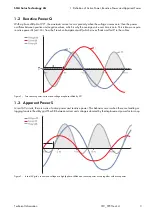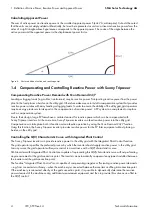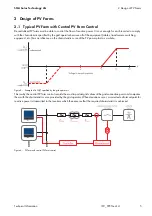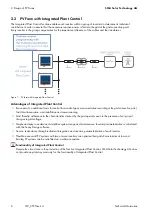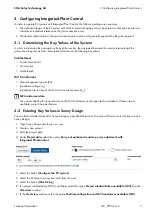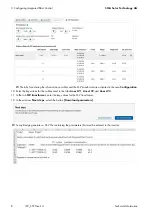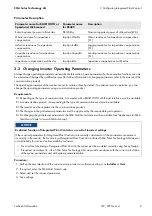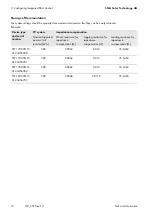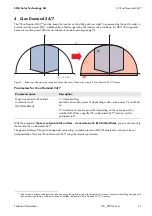
1 Definition of Active Power, Reactive Power and Apparent Power
SMA Solar Technology AG
4
IPC_STP-TI-en-14
Technical Information
Calculating Apparent Power
The sum of active power and reactive power is the so-called apparent power S (unit: VA; volt-ampère). It should be noted
that the units are not simply added arithmetically, but must be represented as vectors: active and reactive power form the
sides of a right triangle whose hypotenuse corresponds to the apparent power. The cosine of the angle between the
active power and the apparent power is the displacement power factor.
Figure 4: Vector addition of active and reactive power
1.4 Compensating and Controlling Reactive Power with Sunny Tripower
Compensating Reactive Power Demand with Q on Demand 24/7
Leading or lagging loads (e.g. cables, transformers) require reactive power. Transporting reactive power from the power
plant to the load places a burden on the utility grid. It therefore makes sense to install a compensation system that provides
reactive power at sites with many leading or lagging loads. In order to ensure the stability of the utility grid, grid operators
require energy producers to take part in the compensation of reactive power. A PV system can complement or replace
such a compensation system.
Due to their design, large PV farms have a certain demand for reactive power which can be compensated with
Sunny Tripower inverters. At the same time, Sunny Tripower inverters can feed reactive power into the utility grid.
Compensation can take place both in feed-in and non-feed-in operation by using the Q on Demand 24/7 function.
Using this function, the Sunny Tripower inverter provides reactive power for the PV farm equipment without placing a
burden on the utility grid.
Controlling the Q(V) Characteristic Curve with Integrated Plant Control
The Sunny Tripower inverter can provide reactive power to the utility grid with the Integrated Plant Control function.
The grid operator specifies the preferred process by which the inverter should supply reactive power to the utility grid.
In many cases, the grid operator will require control in accordance with a Q(V) characteristic curve.
SMA inverters with Integrated Plant Control are capable of representing this Q(V) characteristic curve without performing
any measurement at the grid-connection point. The inverter can automatically compensate equipment installed between
the inverter and the grid-connection point.
The function "Integrated Plant Control" is not capable of compensating irregular or fluctuating reactive power demands
— e.g. from connected machinery — when the machinery is connected between the inverters and the grid-connection point.
If the machinery is connected directly at the grid-connection point, it is possible to dynamically determine the reactive
power demand of the machines using additional measurement equipment and then to provide this value as an offset to
the Q(V) control.


